Assistive Technology for Blind & Visually Impaired Users: Tools for Accessibility
Any-Tech Assistive Devices for Vision Impaired Users
This article explores how assistive technology opens doors and unlocks potential for people with visual impairments. It presents a list of assistive devices for the blind and visually impaired, discusses assistive technology for low vision users, examines cutting-edge devices to help blind people, and addresses real-world obstacles to equal access.
Accessibility in Action, Assistive Technology, and Why They Matter So Much
Accessibility at its most essential is the philosophy of intentionally planning for and implementing the fullest possible usability, for as many interfaces and environments as possible, to include the widest possible range of users.
Accessibility is also the practice of designing products, services, and environments to be usable by people with different abilities and needs. This concept is crucial in creating inclusive spaces and solutions that can be utilized by everyone, including people with disabilities. Accessibility can be applied in physical and digital environments.
For businesses and organizations concerned with bottom-line benefits, it’s a shot in the arm, boosting reputation, expanding audiences, and helping avoid sticky legal and financial situations. It is wisest to bake in access at the earliest possible point, making it a part of planning rather than setting yourself up for costly fixes down the line.
When we make technologies, information, and physical spaces increasingly accessible, more individuals are able to join in education, employment, public services, and leisure activities, and participate fully in society. Accessibility is a commitment to diversity, and a recognition of the fact that everyone, regardless of their abilities, should have equal opportunities to engage independently with the world around them.
Why is accessibility so important? Because everyone deserves access to information, experiences, and the tools they need to thrive. Accessibility is not an act of charity; it's an invaluable investment in building a more equitable and inclusive society where everyone can contribute their unique talents and perspectives.
What is Assistive Technology?
Assistive technology (AT) refers to a broad array of physical and digital tools, devices, and software specifically designed to aid people with disabilities in performing tasks that might otherwise be difficult due to their impairments. It can also refer to low-tech or no-tech tools, as well as tools and devices that have been adapted to work in ways that offer equitable access to people with disabilities. From screen readers, magnifiers, and refreshable Braille displays for users with visual impairments, to communication aids for individuals with speech challenges, to thought-controlled prosthetics for people with mobility impairment and paralysis, assistive technology is an integral component in bridging the gap between an individual's capabilities, and the demands of their environment; using AT properly means greater independence, participation, ease of use and enjoyment for people with disabilities.
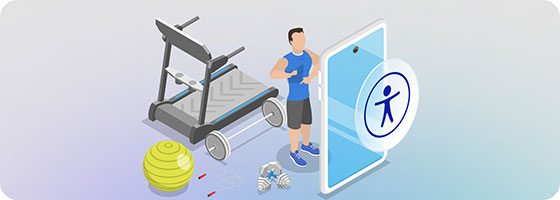
Vision Loss & Blindness: Guided by Stars Unseen
For over 2.2 billion people on our planet, the world around them unfolds differently. They see with their minds more than with their eyes. Blindness and visual impairment are not conditions that most people would choose to have, but many people with these disabilities are truly impressive human beings. They’re people we might aspire to emulate: resilient, determined, creative problem solvers. Without romanticizing or glossing over the difficulties people can face due to vision impairment, it is true that over the ages, along with unhelpful or fearful associations, vision loss has also symbolized a parallel heightened acuity of other senses: hearing, touch, smell, and even a deeper self-knowledge or spiritual understanding. People today may or may not have any convictions at all regarding theories of prophetic visions or a spirit world, depending on their individual philosophies. Science does support the idea that other senses, including bodily sensation and emotional perception, can be heightened when vision is lost. What we can all agree on is that there are many ways to perceive our environments that aren’t based on senses like sight.
The diverse and often fascinating beliefs about blindness across cultures and throughout history present a valuable background and some context for how we in modern times relate to vision loss, and to people who have visual disabilities. Of course, that’s far from the whole story: it’s an outsider’s perspective. To really begin to comprehend what it means to live with blindness or vision loss, the best person to ask is someone who has that disability.
A Runner’s Tale: Achieving Her Vision
Legally blind from the age of 9 as a result of Stargardt's disease, American athlete and Paralympian Marla Lee Runyan’s parents were told by an examining doctor that she would never be more than a C student at best. Her response was combative energy, rather than despair. “I was so mad,” Runyan said. “I was going to spend every day proving (the doctor) was wrong.” She went on to rise far above anyone's naysaying expectations, competing in two Olympic games, winning gold in the Pan-American Games, holding United States and global records while competing fiercely against world-class fully-sighted runners.
At a visual disability advocacy organization’s centennial celebration event, Runyan stated, “Support means more than just saying, ‘I know you can do it.’ Real support means saying, ‘I’ll help you do it, and I’ll show you how.’”

So let’s talk about how.
Marla Runyan’s “top three” recommendations for people facing blindness and visual impairment are:
- Keep A Winner’s Attitude
“You are going to be able to figure this out. You will succeed, and that power of positive thinking approach becomes a ‘self fulfilling prophecy’.”
Runyan is also quoted as saying, “Not only could I keep up with sighted kids, I could excel. I have an intense competitiveness that was always in me.” She pushed herself not only to run, and not only to compete in the Paralympics, she ran against users without disabilities, athletes at their peak. That kind of powerful inner drive can’t be taken for granted, but it can be encouraged. It may grow as individuals with disabilities fight unavoidable battles for access and engagement. - Find Your Best Assistive Tools
Runyan’s top assistive tech tools are her Apple iPhone and Mac, with iPhone’s Siri using voice recognition and Mac’s VoiceOver screen reader acting as a “personal assistant.” Without these tools, she avers, “I would not have my Masters degree.”
Assistive tools can be as low-tech and fundamental as grocery delivery. Runyan used to memorize items and their locations when food shopping. Delivery services made the whole experience doable. When we find, collect, and utilize the right tools to optimize accessibility and make our lives more manageable, from bottom-line basics like online grocery shopping to advanced adaptive technology, we’re on the right track. - Develop Support Circles, Build Community
Marla Runyan turned herself into the runner and the winner she knew she could be. She didn’t do it alone: her parents advocated for her as a child. Now, leveraging the skills she learned as part of overcoming society’s low expectations, she’s advocating for support and success herself, for other people with blindness and visual disabilities.
Support and community operate in more than one direction. “Chances are, if it’s not you who is going to have vision loss, someone in your family, or a close friend will. We’re all interconnected and we become stronger as a community if we help and support one another,” she said. That’s how community should work: the connections we build when we guide and assist others can often double back later to encourage and aid us when we need it.
Whether we ourselves have a visual disability, if we are assisting someone who is blind or visually disabled, or if we are just operating on general principles of human decency, we can offer support in ways that people with or without disabilities can use and will appreciate. Real support, as Marla Runyan shared, sounds like “I’ll help you do it”. That’s infinitely more valuable than a well-wish or a high-flown platitude. When active support is paired with clear-cut “I’ll show you how” guidance, that’s a winning one-two combination. We can all share support and community to help each other create paths to success, regardless of ability.
Currently the Assistant Director of Digital Accessibility at New York’s Syracuse University, and a former teacher at Perkins School for the Blind, Helen Keller’s alma mater, Marla Runyan continues to put into practice her personal ethos of smart, supportive success, for herself and her communities. She is also a champion of sports equity as well as an advocate of digital accessibility, having contributed to the W3C Accessibility Guidelines Working Group as an Invited Expert.
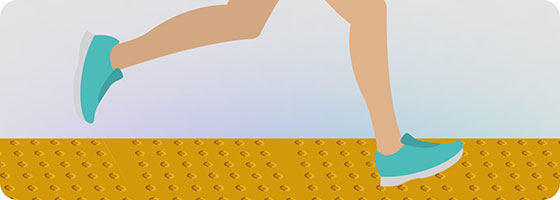
Assistive Technology for Visually Impaired Individuals: Adaptive Tools for a More Accessible Life
Assistive technology (or AT) has been steadily revolutionizing the lives of blind and visually impaired individuals, reinforcing their ability to navigate both the physical and digital world independently with greater ease of access.
From the simple white cane to high-tech cutting-edge “smart” glasses, assistive technology for blind and visually impaired individuals comprises a vast range of tools and devices designed to address the unique challenges they face. In terms of physical accessibility, low-tech or no-tech tools like canes and guide dogs, and mid-tech or high-tech tools like electronic travel aids can serve to make navigating surroundings safer and more assured for blind people, adding to their self-confidence and autonomy, and expanding their mobility.
In the digital sphere, accessibility tools including screen readers, text-to-speech software, and specialized keyboards are helping open unrestricted paths for blind and visually impaired individuals to connect to information and communication, adding new or better adaptive access to websites, documents, and online platforms.
Assistive technology is not a magic wand waving all difficulties out of the way, but it is a powerful toolkit for leveling the playing field for people with disabilities. From smartphones narrating surroundings to refreshable Braille displays translating text, these tools offer adaptive ways to navigate daily life, pursue education, and achieve goals. Let's explore the dynamic landscape of AT, where innovation is breaking down barriers one device at a time.
A Global Perspective on Visual Impairment
There’s more to understanding blindness and its impact than just the bare numbers. But statistics can help us begin to grasp the sheer volume of people who are dealing with low or no vision and attendant difficulties.
Nearly 30% of the human population worldwide experience some form of vision impairment, according to the World Health Organization (WHO).
At least 1 billion (or nearly half) of these cases could have been prevented or are yet to be addressed.
About 1.8 billion globally are estimated to be affected by presbyopia, a common aging-related vision condition.
90% of people with blindness live in low- and middle-income countries.
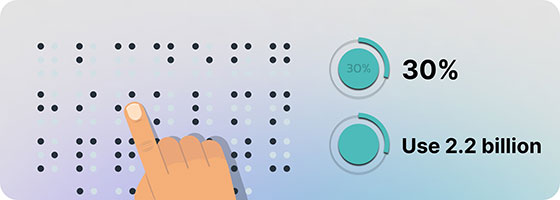
Challenges Faced by People with Visual Disabilities
While the loss of sight itself presents significant challenges, individuals with visual impairments often face many additional roadblocks in their daily lives as a result of their blindness or low vision:
- Access to Information and Education
Navigating printed materials, digital content, and educational resources can be difficult without appropriate accommodations. - Independent Living
Tasks like cooking, cleaning, managing finances, and using public transportation can become daunting without assistive tools. - Employment Opportunities
Limited access to technology and workplace accommodations can hinder career advancement and financial independence. - Social Interaction and Inclusion
Social isolation can arise due to challenges in recognizing faces, participating in social activities, and accessing visual cues in communication. - Mental Health
Feelings of isolation, anxiety, and depression can stem from the challenges of navigating a world designed primarily for visual interaction.
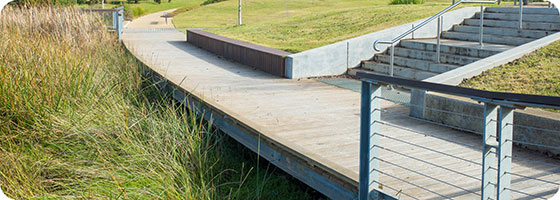
Lighting the Way with Assistive Technology
The world of assistive technology (AT) is brimming with innovative tools designed to empower and bridge the gap between limitations and possibilities. Here's how some key technologies can shift the focus:
Information and Education
Screen Readers
Software tools like JAWS, NVDA, VoiceOver, and TalkBack transform text into spoken words, creating adaptive access to websites, documents, books or emails.
Braille Technology
Refreshable Braille displays, Braille e-books, and Braille printers provide an alternative, tactile way to engage with information. Many people with blindness and low vision prefer this approach.
Independent Living
Magnification Tools
ZoomText and similar tools expand visual information on computer screens, making everyday tasks like cooking, managing finances, and reading medication labels easier.
Handheld Digital Magnifiers
These tools expand visual information on computer screens, making everyday tasks like cooking, managing finances, and reading medication labels easier.
Large Print Keyboards
These clear, easy-to-read keys are helpful for those with partial sight, aiding in accurate typing and offering greater independence while using computers.
Employment Opportunities
Specialized Software & Hardware
These can adapt to individual needs, so individuals with blindness can bypass barriers to participation in meetings, presentations, and collaborative projects.
Website Accessibility Tools
Tools for website accessibility can help companies and organizations comply with WCAG (Web Content Accessibility Guidelines) standards, providing equal access to job applications, online training, and other digital resources. And, websites can integrate accessibility features that work for their content, such as LinkedIn’s recent collaboration with Microsoft’s Immersive Reader.
Top Workplaces for Disability Inclusion
Although finding employment presents challenges for people with disabilities, resources are available to direct job seekers to workplaces that welcome employees with disabilities.
Social Interaction and Inclusion
Text-to-Speech & Speech-to-Text
Apps with these functions can break down communication barriers, facilitating conversations and encouraging social connection.
Navigation Tools
GPS devices and smartphone apps with voice guidance, for example, empower independent movement and exploration, reducing reliance on others.
Mental Health
A Cumulative Effect
Although no tool can truly claim to improve anyone’s mental health on its own, the assistive technology we’ve mentioned can boost independence and self-reliance, reducing feelings of isolation and bolstering self-esteem. And, accessible educational resources and recreational tools provide opportunities for personal growth and engagement, combating boredom and depression. All in all, using a combination of assistive technology tools to help access services, information, and interaction is one way to benefit the mental health of persons with visual impairment and blindness.
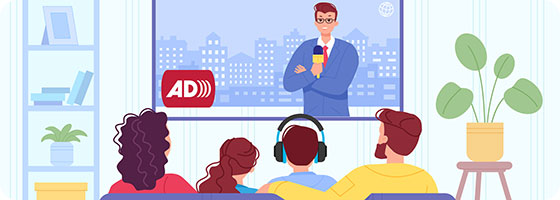
A Spectrum of Solutions
The world of assistive technology is vast and constantly evolving. Tools for mobility, communication, education, and entertainment are continually built and improved to serve diverse needs and preferences. The key is to find the right combination of tools so that individuals can better navigate their unique landscape and achieve their goals.
Digital AT: Website Accessibility Tools
A range of different types of website accessibility tools can play an important role in bridging the gap between information and accessibility. Accessibility plugins, accessibility overlays, and website accessibility scanning, testing and monitoring tools can help businesses and web administrators identify and fix barriers within websites and web applications, creating a more inclusive experience for everyone. Here's a look at some of the better-known options:
Automated Assessment Platforms
These AI-powered platforms systematically crawl websites, analyzing content, code, and design elements for potential accessibility issues. They function as digital inspectors, flagging areas that may pose challenges for visually impaired users. Examples include WAVE by WebAIM and Lighthouse by Google.
Real-time Overlay Solutions
These tools offer dynamic accessibility feedback by integrating directly into the website's interface. They provide a discreet toolbar with features like font size adjustments, enhanced color contrast, text-to-speech functionality, and keyboard navigation guides. Userway and EqualWeb are notable examples.
WCAG Compliance Frameworks
Web Content Accessibility Guidelines (WCAG) set international standards for accessible websites. Companies like Siteimprove, Level Access and Monsido, among many others, offer comprehensive audits and remediation plans to promote compliance with these guidelines, opening doors to a broader audience.
Targeted Accessibility Widgets
These smaller-scale solutions address specific accessibility challenges. Examples include a “speak page” button to voice content, a built-in screen reader, or a captioning tool for multimedia elements. Simple Accessibility and AChecker are some of the tools that demonstrate this type of versatility.
Human-Centered Testing and Evaluation
While automated tools provide valuable insights, human experience is irreplaceable. Enlisting professionals with lived experience of visual impairment to test websites and give firsthand feedback is the best way to solve issues and make sure they are addressed beyond technical compliance. This can include consultation, manual audit, guided or managed remediation, and other hands-on ways to deal with accessibility violations.
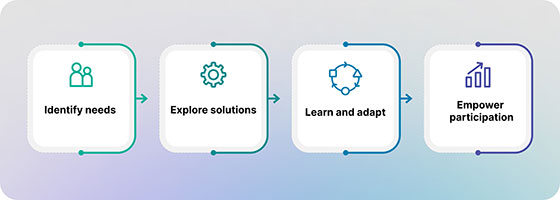
Digital Accessibility Pro Tip: There Are No Shortcuts
There’s no hack or instant fix that can provide total accessibility in the blink of an eye. While bridge technologies like plugins and widgets can significantly aid accessibility, proactive accessibility integration and constant re-evaluation of compliance is key. Integrate a strategic combination of all the tools that work for you into your development workflow, and make accessibility a core design principle from the start.
Potential Hurdles, Hazards and Snags in AT
Although accessibility tools are helping pave the way for a more inclusive digital world, it's important to acknowledge and prepare to avoid some of the potential obstacles or setbacks that can arise when implementing and utilizing them. Tools used by individuals for personal and professional adaptive access, as well as the software, planning and implementation used to create better access for organizations and their websites and other digital offerings, must all be carefully considered to avoid or solve as many of these difficulties as possible.
Technology and Tools
Complexity
Some accessibility tools may have a steep learning curve for users and website admins, particularly those with limited technical expertise. Adequate training and support are crucial.
Integration and Compatibility
Integrating accessibility tools seamlessly into existing websites can present technical challenges, especially for older or custom-built platforms.
False Positives and Negatives
Automated tools may generate inaccurate flags for accessibility issues or miss certain barriers altogether. Human testing and evaluation remain essential for comprehensive coverage.
Training and Education
Awareness and Adoption
Businesses and webmasters may lack awareness of the existence and importance of accessibility tools, requiring targeted education efforts.
User Training
Even with user-friendly tools, providing clear instructions and training for individuals with different accessibility needs is vital for effective utilization.
Digital Literacy Gap
Overcoming incomplete digital literacy for individuals with visual impairments who may not have experience with assistive technology is an important part of working towards successful adoption.
Financial and Resource Outlay
Tools and Implementation Costs
Some accessibility tools can be expensive, and implementing them may require additional resources, such as hiring accessibility specialists.
Maintenance and Updates
Keeping accessibility tools and website features up-to-date requires ongoing maintenance and resources, which can be a challenge for smaller or struggling organizations.
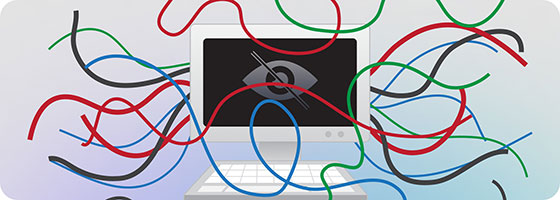
Making Best Use of AT: Avoiding Pitfalls
Addressing the various setbacks that can occur when using assistive technology, either personally as an end-user, or professionally as a provider, developer, or facilitator, involves a multi-pronged approach:
- Prioritize User-Centered Design
Organizations, developers and designers at every point in the process of building and implementing accessibility tools must keep the needs of diverse users in mind. - Invest in Training and Support
Businesses and organizations should make sure clear instructions, tutorials, and readily available support channels are in place, to empower both users and website owners. Users with visual disabilities can find funding for training and career development at every educational level, including grants and fellowships. - Raise Awareness, Promote Collaboration
Raising awareness about the importance of accessibility and cultivating collaboration between stakeholders can drive wider adoption of assistive technology on an organization-wide and system-wide level. - Seek Community Partnerships
Partnering with disability advocacy groups and accessibility experts can provide valuable guidance and resources for organizations and businesses. For individuals with disabilities, this is also an opportunity to make their voices heard in ways that may ripple outward.
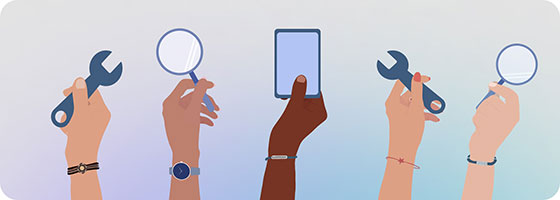
Pushing Ahead: Assistive Technology Development
Continuing development and advancement in assistive technology (AT) must be part of any plan of action, to further our progress and the way towards better access for all, and a a more inclusive society. We must work to maximize both technological and human potential, building on existing tech and user experience, and letting our unlimited imaginations run ahead, to both improve and go beyond screen readers and instant language tools for individuals with visual and other disabilities. Tearing down barriers to access is not enough: we need to create new paths and tools to guide and assist people in pursuing and achieving goals that were previously inaccessible, so they can more fully contribute their unique abilities to society.
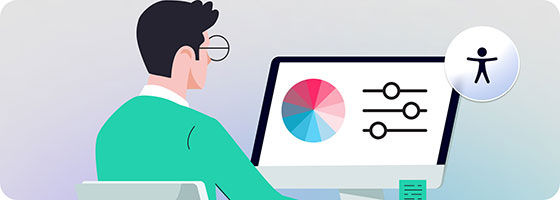
Making AT Accessible
Accessibility goes beyond innovation; real-life access is dependent on assistive technology’s affordability and widespread availability. Currently, many people are simply priced out of life-changing AT, perpetuating inequality. Making AT more affordable and accessible through innovative funding models, broader insurance coverage, and strategic partnerships is a fundamental step in leveling the playing field.
Classrooms should be equipped with accessible learning tools, public spaces must be designed with diverse abilities in mind, and workplaces would do well to welcome all available talents. Human participation, contribution, and success should not be limited by ability: when we push to get ourselves and others through situational and environment-based obstacles, we’re also removing the stumbling blocks slowing down our society as a whole.
Investing in AT advancement and accessibility is a strategic investment in a brighter future for everyone. By improving access and adapting our systems and technology to consider diverse needs, we unlock opportunities for innovation, productivity, and progress. This journey demands our continuous commitment to pushing technological boundaries, dismantling financial barriers, and intentionally integrating adaptive and assistive technology into our world.
Charting a Brighter Future for All of Us
Everyone deserves a chance to chase their dreams, unhindered by environments that do not offer access to people with differing abilities. Assistive technology offers tools that smooth out many of the bumps in the road, removing obstacles so individuals with disabilities can interact with and more fully engage with our physical and digital worlds.
Innovating technology that serves adaptive purposes isn't enough, although it is important. We need to dismantle cost barriers and make assistive technology readily available. After all, why shouldn’t classrooms be equipped for all learners, public spaces welcome every ability, and workplaces celebrate diverse talents? We have a lot of the technology and understanding that we need to make it happen. We need to use what we have, and develop what’s missing. Nobody should be left out or left behind.
We must invest in breaking down barriers. Let's work together to create a world where everyone can contribute their unique skills and talents and write their own success story, empowered by technology and fueled by inclusion. That’s how we move towards a stronger, more vibrant future for everyone: by prioritizing inclusive access to assistive technology, we unlock new possibilities for innovation, productivity, and progress.
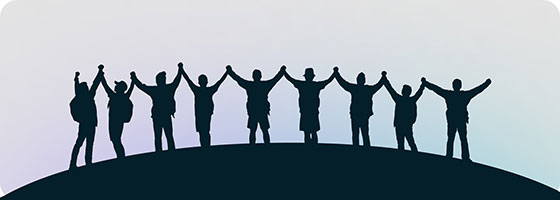
FAQs
Is there a “best” tool or type of assistive technology for people with visual impairments?
There's no one-size-fits-all solution. The best assistive technology depends on individual needs, preferences, and daily activities. Popular options include various types of screen readers, braille displays, magnifiers, and smart glasses. Explore and find the tools work best for you.
What can assistive technology help with, besides accessing information?
Technology can assist with tasks like navigation and mobility through guide canes with audio feedback, smartwatches with voice prompts, and GPS devices with accessibility features. It can even help with personal care through talking appliances and specialized devices for daily living activities.
How can I get past the cost barrier of assistive technology?
While costs can be significant, there are resources available. Many government programs, philanthropic organizations, and disability advocacy groups offer financial assistance or loan programs for assistive technology purchases. Second-hand purchasing or open-source software can also be helpful.
How can I learn how to use assistive technology effectively?
Technology providers often offer training programs and support resources to help you get the most out of their products. Local disability organizations and community centers may also offer workshops and courses on various assistive technologies. Don't hesitate to reach out for support: you may be surprised at the array of available options.
How can I advocate for better accessibility in public spaces and workplaces?
Educating others about the challenges faced by people with visual impairments can raise awareness and inspire action. Connecting with disability rights organizations and sharing your personal life experiences can also contribute to advocating for accessible infrastructure and inclusive practices.









